Texas Instruments TI-73 User Manual
Using the TI-73:
A Guide for Teachers
® Table of Contents <
Developed by
Cathy Cromar, Stephen Davies, Pamela Patton Giles,
Gary Hanson, Pamela Weber Harris, Rita Janes,
Ellen Johnston, Jane Martain, Linda K. McNay, Melissa Nast, Louise Nutzman, Aletha Paskett, Claudia Schmitt, and Karen Wilcox
Edited by
Brenda Curry
Design by
Susan Gullord
With contributions by
Eddy Frey, Doug Harnish, Guy Harris, Gay Riley-Pfund, and Dianna Tidwell

ii Using the TI-73: A Guide for Teachers
© 1998 TEXAS INSTRUMENTS INCORPORATED

iii
About the Development Team
Texas Instruments would like to acknowledge the following individuals who worked as a team in developing and evaluating these materials.
Cathy Cromar
Stephen Davies
Pamela Patton Giles
Gary Hanson
Pamela Weber Harris
Rita Janes
Ellen Johnston
Jane Martain
Linda K. McNay
Melissa Nast
Louise Nutzman
Aletha Paskett
Claudia Schmitt
Karen Wilcox
teacher, Cottonwood Heights Elementary School, Salt Lake City, Utah teacher, Oquirrh Elementary School, West Jordan, Utah
K-12 math specialist, Jordan School District, Sandy, Utah teacher, Sprucewood Elementary School, Sandy, Utah
teacher, Southwest Texas State University, San Marcos, Texas teacher, Newfound Educational Associates, St. John’s, Newfoundland teacher, Trinity Junior High School, Fort Smith, Arkansas
teacher, Mountview Elementary School, Salt Lake City, Utah teacher, Quincy Junior High School, Quincy, Illinois
teacher, Arlington, Texas
teacher, Sugar Land Middle School, Sugar Land, Texas teacher, Indian Hills Middle School, Sandy, Utah teacher, Oquirrh Elementary School, West Jordan, Utah teacher, Columbus, Ohio
Important notice regarding book materials
Texas Instruments makes no warranty, either expressed or implied, including but not limited to any implied warranties of merchantability and fitness for a particular purpose, regarding any programs or book materials and makes such materials available solely on an “as-is” basis. In no event shall Texas Instruments be liable to anyone for special, collateral, incidental, or consequential damages in connection with or arising out of the purchase or use of these materials, and the sole and exclusive liability of Texas Instruments, regardless of the form of action, shall not exceed the purchase price of this book. Moreover, Texas Instruments shall not be liable for any claim of any kind whatsoever against the use of these materials by any other party.
Permission is hereby granted to teachers to reprint or photocopy in classroom, workshop, or seminar quantities the pages or sheets in this work that carry a Texas Instruments copyright notice. These pages are designed to be reproduced by teachers for use in their classes, workshops, or seminars, provided each copy made shows the copyright notice. Such copies may not be sold, and further distribution is expressly prohibited. Except as authorized above, prior written permission must be obtained from Texas Instruments Incorporated to reproduce or transmit this work or portions thereof in any other form or by any other electronic or mechanical means, including any information storage or retrieval system, unless expressly permitted by federal copyright law. Send inquiries to this address: Texas Instruments Incorporated, 7800 Banner Drive, M/S 3918, Dallas, TX 75251, Attention: Manager, Business Services
Note: Using calculators other than the TI-73 may produce results different from those described in these materials.
www.ti.com/calc ti-cares@ti.com
Copyright © 1998 Texas Instruments Incorporated. Except for the specific rights granted herein, all rights are reserved.
Printed in the United States of America.
© 1998 TEXAS INSTRUMENTS INCORPORATED

iv Using the TI-73: A Guide for Teachers
About the Activities
This guide consists of 12 activities designed to be teacher-directed. They are intended to help develop mathematical concepts while incorporating the TI-73 as a teaching tool.
Organization
Each activity is self-contained and includes:
♦The mathematical strands with which the activity is most closely associated: Number Sense; Patterns, Relations, and Functions; Measurement and Geometry; or Probability and Statistics
♦The materials needed to perform the activity
♦An overview of the mathematical purpose of the activity
♦The detailed procedure, including step-by-step TI-73 keystrokes Additionally, most of the activities contain:
♦A student activity sheet as needed
♦A teacher black-line master as needed
♦A section to wrap-up what is being taught
♦A section to assess what is being taught
♦A section to extend what is being taught
Conventions Used
♦ |
Brackets [ ] around a key’s symbol |
Example |
- l |
|
indicate that the key is a second function |
|
|
|
(printed in yellow) on the TI-73. |
|
|
♦ |
Bold type indicates a calculator display |
Example |
Done |
|
or format. |
|
|
How To Order Materials
To place an order or request additional information about TI calculators, call
our toll-free number: 1-800-TI-CARES (1-800-842-2737).
© 1998 TEXAS INSTRUMENTS INCORPORATED
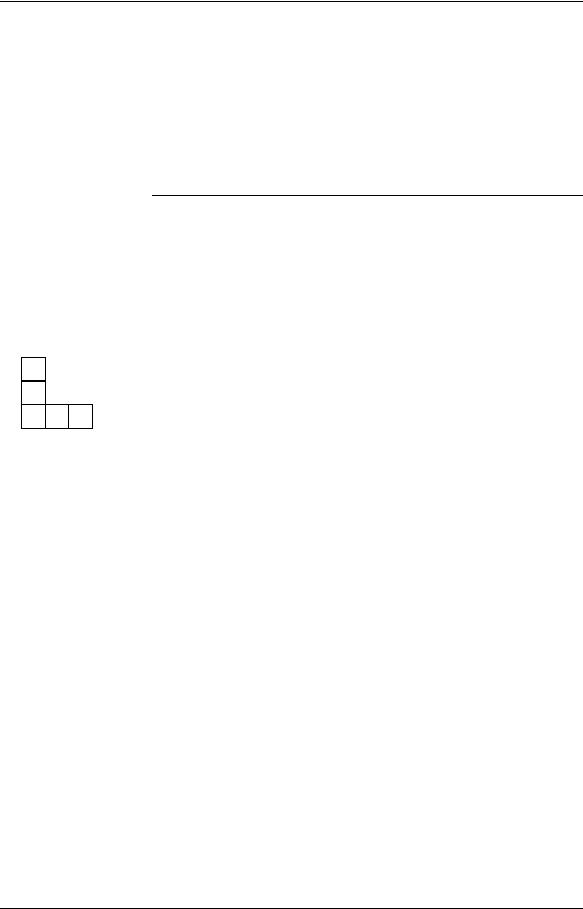
v
Table of Contents
About the Development Team |
iii |
About the Activities |
iv |
Number Sense
|
|
|
|
The Cookie Caper |
1 |
|
|
|
|
Dice Digits |
5 |
|
|
|
|
How Do You Measure Up? |
9 |
|
|
|
|
Patterns, Relations, and Functions |
|
|
|
|
|
Stadium Walls |
13 |
|
|||||
|
|
|
|
The Twin’s Towers |
23 |
|
|
|
|
||
|
|
|
|
Major Martian Headache |
31 |
|
|
|
|
Measurement and Geometry |
|
|
|
|
|
The Dolphin |
35 |
|
|
|
|
Drip, Drip, Drip |
41 |
|
|
|
|
Only the Height Has Been Changed |
49 |
|
|
|
|
Probability and Statistics |
|
|
|
|
|
|
|
|
|
|
|
Give Me 5! |
55 |
|
|
|
|
A Foot is a Foot–Or is It? |
63 |
|
|
|
|
Which Brand is Best? |
69 |
|
|
|
|
TI-73 Index |
79 |
|
|
|
|
Activity Content Index |
80 |
© 1998 TEXAS INSTRUMENTS INCORPORATED

1
Activity 1
The Cookie Caper
Students learn about equivalent fractions by sharing their favorite cookies.
Number Sense
♦equivalent fractions
♦fractions to decimals
Materials
♦7cm (2¾ in.) poster board circles for cookies
♦ copies of fractional circles (provided)
♦ shapes of colored paper to represent chocolate chips, nuts, raisins etc. (optional)
♦ glue or glue sticks
♦ scissors
♦ markers or crayons
♦ TI-73 •
Setup
Before you begin, you or you and your students do the following:
♦For each student, cut a poster board circle with a diameter of 7cm (2¾ in.) to represent a cookie.
♦Cut out the fractional circles that are provided and paste one on the back of each poster board “cookie.” (Some students will have halves, some thirds, some fourths, etc.)
♦Cut shapes of colored paper for raisins, nuts, etc., and glue them to the front of the cookies, or have students draw their favorite ingredients on the front of their cookies.
Activity
Have students perform the steps unless otherwise indicated.
1.After designing the cookies, turn them over and cut into the assigned fractional parts pre-pasted on the back.
2.On a sheet of notebook paper, make a diagram of the cookie circle and the cuts made to make the assigned fractional parts.
© 1998 TEXAS INSTRUMENTS INCORPORATED

2 |
Using the TI-73: A Guide for Teachers |
Number Sense |
3.Give students a set time period to trade cookie “bites” (slices) with each other. Tell them they must trade equal-sized pieces, so they will need to know what fractional parts are equal to each other.
Example A ½ slice may be traded for two ¼ slices.
At the end of the trade time, each student should still have a whole cookie, but now it is made of a variety of cookie ingredients.
4.Discuss the results with your students. Ask:
Why did some have a whole cookie, and some did not?
What kinds of trades could they have made to end up with a whole cookie?
5.Use the TI-73 to verify equivalent fraction trades and to count or add up fractions to see if they equal a whole cookie.
Example 1 If a student traded ¼ for 3/12, the student would enter
Y = Q " - t # # # to = b # to Done b
[ = Y Z b
Example 2 If a student traded for ¼, ½, and 3/12, the student would enter
Y = Q " \ Y = Z " \ [ = Y Z b
If a 1 is displayed on the right-hand side of the
screen, the 2 fractions are equivalent. If a 0 is displayed, they are not equivalent fractions.
If a 1 is displayed on the right-hand side of the
screen, the student knows the pieces add up to a whole cookie.
© 1998 TEXAS INSTRUMENTS INCORPORATED

Number Sense |
Activity 1: The Cookie Caper |
3 |
Wrap-up
♦Have students make a list of the fractions they think are equivalent to each other.
♦Have students enter their equivalent fractions into the TI-73 and change each to a decimal using > (fraction-to-decimal function). Discuss why these equivalent fractions also have the same decimal value.
Example Press Y = Q > b.
The display shows .25 as the decimal equivalent for ¼.
Then enter [ = Y Z > b.
The display again shows .25 as the decimal equivalent.
♦Now have students make a diagram of their final cookies next to their original diagrams. Have them label the new fractional parts and decimal amounts.
Extensions
♦Older students: Change the decimals to percents and have a pie chart of all three amounts—fractions, decimals, and percents.
♦All students: Cut their pieces in half, name the fractional parts, and trade again for another set time period. Investigate:
Did they make equivalent trades?
Was it easier this time, or more difficult?
Does the new fractional cookie still add up to a whole cookie on the TI-73?
© 1998 TEXAS INSTRUMENTS INCORPORATED
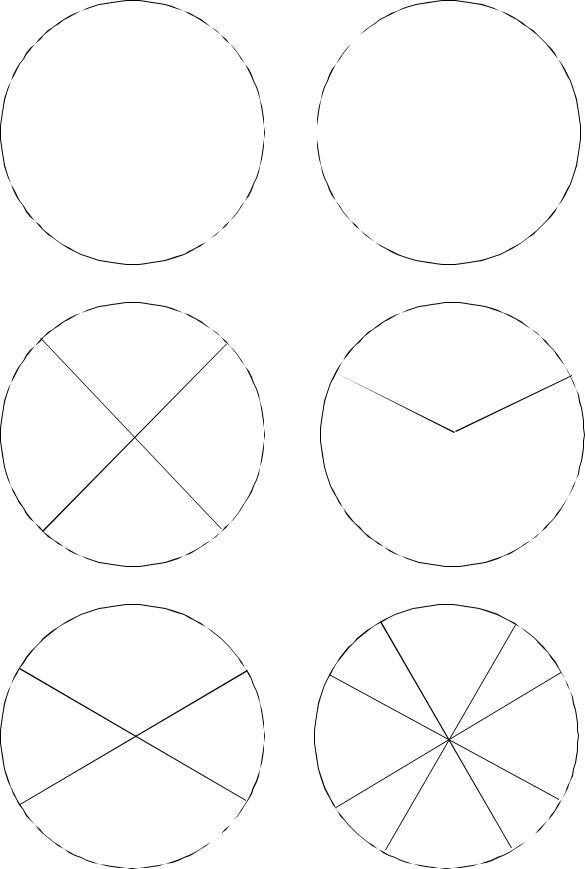
4 |
Using the TI-73: A Guide for Teachers |
|
|
Number Sense |
|||||
|
|
|
|
|
|
|
|
|
|
|
|
|
|
|
|
|
|
|
|
|
|
|
|
|
|
|
|
|
|
|
|
|
|
|
|
|
|
|
|
|
|
|
|
|
|
|
|
|
|
|
|
|
|
|
|
|
|
|
|
|
|
|
|
|
|
|
|
|
|
|
|
|
|
|
|
|
|
|
|
|
|
|
|
|
|
|
|
|
|
|
|
|
|
|
|
|
|
|
|
|
|
|
|
|
|
|
|
|
|
© 1998 TEXAS INSTRUMENTS INCORPORATED

5
Activity 2
Dice Digits
Students use 4 numbers, any operations, and grouping symbols to write mathematical expressions that are equal to each of the numbers 1 through 9.
Setup
Number Sense
♦order of operations
♦mental math
♦basic computation
Materials
♦student activity sheet (provided)
♦transparency of activity sheet
♦TI-73 ³
If your TI-73s have not been used for random number generation prior to this activity, you and your students need to store an integer “seed value” to rand in each TI-73.
With each rand execution, the TI-73 generates the same random-number sequence for a given seed value. The TI-73 factory-set seed value for rand is 0. To generate a different random-number sequence, store any non-zero seed value to rand.
1.Enter the number you want for your seed value. Have students use different seed values. (In the example shown at the right, 1 is used.)
2.Now press X 1 " " 1 b 1 " " 1 b b.
(For more information about seed values, refer to the “1 Probability Menu” section in the Math chapter of the TI-73 Guidebook .)
If you do not enter a seed value, rand uses whatever
value happens to be the current seed. If there is no seed, it uses the factoryset value of 0.
If you want to restore the factory-set seed value,
store 0 to rand or reset the defaults.
© 1998 TEXAS INSTRUMENTS INCORPORATED

6 |
Using the TI-73: A Guide for Teachers |
Number Sense |
Activity—Part A
Whole Class
1.Demonstrate to your students how to roll dice on the TI-73 to get 4 numbers. Record the 4 numbers.
a.Go to the Home screen.
-l
b.Select dice from the MATH PRB menu, and paste it to the Home screen.
1 " " J
c.Enter the number of dice you want to roll at one time.
Q E b
You now have 4 numbers.
d. Record the 4 numbers on the transparency.
2.Have students use each of the 4 numbers once, along with any operations symbols (and grouping symbols, when needed), to write an expression that has a value of 1.
Example If your 4 numbers were {4 3 4 5}, an expression would be 1 = (5 - 3) - (4/4).
3.Record one of these expressions on the transparency. Ask if anyone has a different expression. Record these, also.
4.Repeat this procedure to write an expression equal to 2.
5.Continue the demonstration until students understand what to do.
Students may use the TI-73 to find the expression or to check the value of the expression.
Example If the 4 numbers are {4 3 4 5}, and the expression is 1 = (5 - 3) - (4/4),
then enter
D R T [ E T
D Q F Q E b.
© 1998 TEXAS INSTRUMENTS INCORPORATED

Number Sense |
Activity 2: Dice Digits |
7 |
Activity—Part B
Individual or Small Group
1.Have each student or pair of students roll dice on the TI-73 to get 4 numbers.
2.Instruct students to use all 4 numbers, any operations, and grouping symbols to write an expression for each of the numbers 1 through 9.
3.Have students check their work on the TI-73 and record each expression on the student activity sheet provided.
Wrap-up
♦Students can exchange papers and check one another’s work.
♦Ask students: Will it always be possible to write expressions for each counting number using the 4 numbers? (no)
♦Share examples of what students believe to be impossible.
Assessment Suggestions
♦Ask students to write a journal entry summarizing the rules for order of operations. (Refer to “Equation Operating System (EOSé)” in Appendix B of the TI-73 Guidebook .)
♦Ask students to think of an example of 4 numbers that would make this activity difficult or impossible to complete and explain why.
Extensions
♦Find the probability of getting an “unlucky” roll such as four 1s.
♦Depending on the level of the students, extend the activity to include exponents, roots, factorials, etc.
♦As a class, use the 4 digits of the current year to develop expressions that equal the numbers 1 through 100. Display students’ work on a bulletin board.
© 1998 TEXAS INSTRUMENTS INCORPORATED
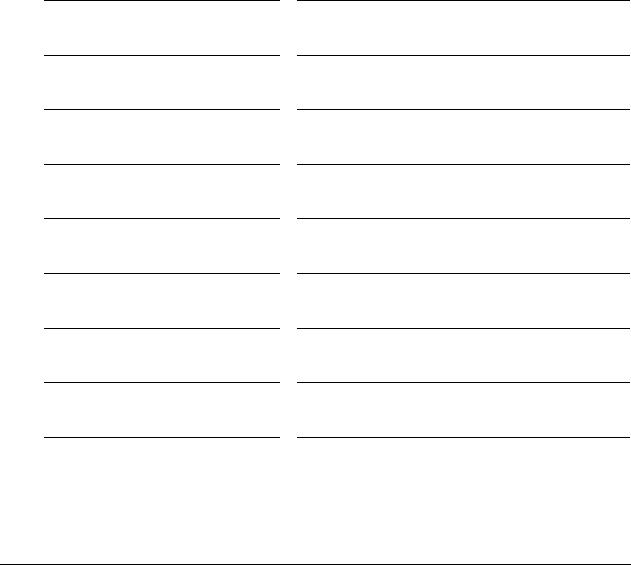
8 |
Using the TI-73: A Guide for Teachers |
Number Sense |
Name __________________________
Date __________________________
Activity 2
Dice Digits
Roll dice to get 4 numbers. Record numbers below.
________ ________ ________ ________
Expression |
Key Sequence |
1=
2=
3=
4=
5=
6=
7=
8=
9=
Can you find more than one expression for each number?
© 1998 TEXAS INSTRUMENTS INCORPORATED

9
Activity 3
How Do You Measure Up?
Number Sense
♦ratios
♦mean
♦estimation
♦measurement
Students discover the ratio between their heights and the lengths of their intestines. This activity is a good introduction to using lists to find the mean and performing operations on lists.
Materials
♦tape measures or rulers for students to measure their heights
♦ball of string
♦scissors
♦masking tape
♦TI-73 •
Setup
♦Ask students: How long do you think your small intestine is?
♦Have each student estimate the length of their intestine in meters or feet, and then cut a piece of string this length.
♦Tape a long strip of masking tape on the floor as the horizontal axis, and then make a vertical bar graph using the students’ pieces of strings.
You may want to do this part of the setup in the
hall or some place with a large area of floor space.
Activity—Part A
In this part, students find the average length of their small intestines. Have students perform the steps unless otherwise indicated.
© 1998 TEXAS INSTRUMENTS INCORPORATED

10 |
Using the TI-73: A Guide for Teachers |
Number Sense |
1.Measure the strings.
2.Enter the data in L1 on the TI-73.
a.Display the List editor.
3
b.If necessary, clear L1. $ to highlight L1
: b
c.Starting at the first line in L1, enter the string lengths. (You’ll get an error if L1 is still highlighted.) Press b after each list item.
3.Find the mean of L1.
a.Return to the Home screen.
-l
b.Access the - v MATH menu and select mean.
-v" " [
c.Calculate the mean of L1.
-v Y E b
4.Inform students that the average small intestine is 6m (20 ft.) long. Ask:
Was the mean you found close to 6m (20 ft.)? Who had the closest estimate?
Which estimate was off the farthest?
What are some objects that are 6m (20 ft.) long?
If all the strings were connected together, how long do you think they would be?
5.Find the sum.
a.Return to the Home screen.
-l
b.Access the - vMATH menu and select sum.
-v" " J
c.Calculate the sum.
-vYEb
Find some objects 6m (20 ft.) long that students are
familiar with in your local area.
© 1998 TEXAS INSTRUMENTS INCORPORATED

Number Sense |
Activity 3: How Do You Measure Up? |
11 |
Activity—Part B
In this part, students discover the ratio of the average height of a student to the average length of an intestine. Have students perform the steps unless otherwise indicated.
1.Measure height in centimeters or inches.
2.Enter the data in L2.
a.Display the List editor.
3
b.If necessary, clear L2.
$ to highlight L2
: b
c.Enter the heights in L2. Press b after each list item.
3.Find the average height on the Home screen using the mean function.
a.Return to the Home screen.
-l
b.Access the MATH menu and select mean.
-v" " [
c.Calculate the mean.
-v Z E b
4.Compare the average height to intestine length as a ratio.
Wrap-up
Ask students: How many average students would it take to make the length of an average intestine?
© 1998 TEXAS INSTRUMENTS INCORPORATED

12 |
Using the TI-73: A Guide for Teachers |
Number Sense |
Assessment Suggestions
The average length of the small intestine of an ostrich is 1372cm (45 ft.). Three ostriches have heights of 314cm (10 ft. 3 in.), 308cm (10 ft. 1 in.), and 299cm (9 ft. 8 in). Have students find the ratio of the ostriches’ average height to average intestine length.
Extensions
Investigate the length of the intestine for different animals. Compare the ratio of the height to intestine length to the ratio you discovered above.
Herbivores length of intestines = |
4 times body length or 12 |
|
times length of torso. |
Carnivores length of intestines = |
body length or 6 times |
|
length of torso. |
|
|
How many average students would it take to make the length of a weasel’s intestine?
How many teachers would it take to make the length of the intestine?
© 1998 TEXAS INSTRUMENTS INCORPORATED
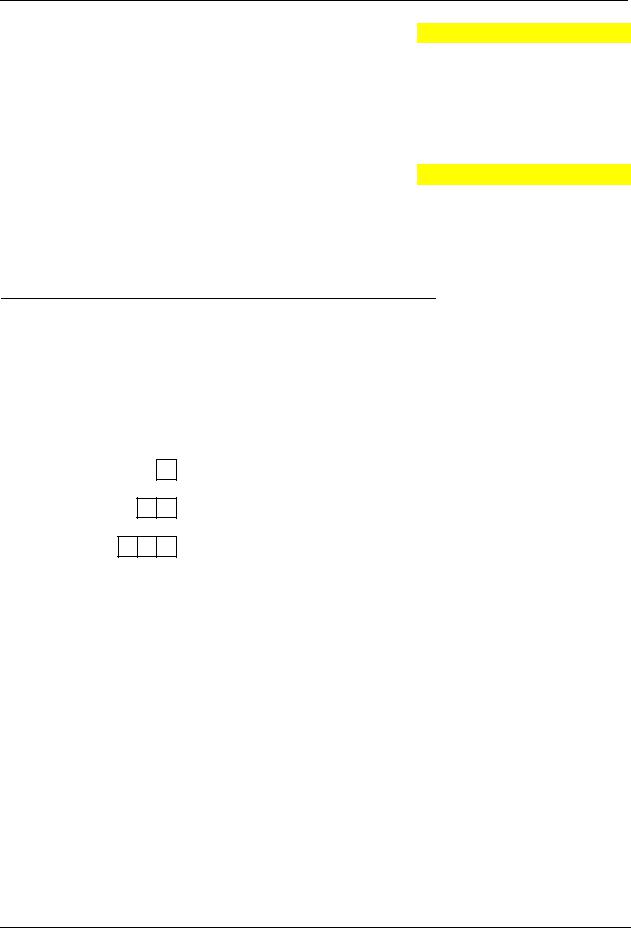
13
Activity 4
Stadium Walls
Students investigate real-life situations and find patterns by making concrete representations and making T-charts. Students then describe and generalize these patterns verbally, symbolically, and graphically.
Patterns and Relations
♦patterning
♦graphing
♦evaluating expressions
♦equivalent math expressions
Materials
♦graph paper
♦toothpicks
♦TI-73 •
Setup
Present the following problem to students.
An engineer designs the skeleton for the walls of a new stadium from equal lengths of steel beams that are placed in a rectangular pattern as shown below. The engineer knows that one wall has to have a length of 57. How many steel beams are needed for this wall?
length 1
length 2
length 3
(This view is from the front.)
The length of each wall is measured by the number of beams along the bottom of the wall.
© 1998 TEXAS INSTRUMENTS INCORPORATED

14 |
Using the TI-73: A Guide for Teachers |
Patterns and Relations |
Activity
Have students perform the steps unless otherwise indicated.
1.Model the wall using toothpicks to represent the beams to a length of 6.
2.As each length of the wall is modeled, record the total number of beams in a T-chart.
Example |
|
|
|
|
length(X) |
|
number of |
|
|
||
|
|
beams(Y) |
|
|
|
|
|
|
1 |
|
4 |
2 |
|
7 |
|
3 |
|
10 |
|
4 |
|
13 |
|
5 |
|
16 |
|
6 |
|
19 |
|
7 |
|
22 |
|
|
|
|
|
3.Investigate the pattern in the tables and concrete models and predict how many beams are needed for a wall length of 7 and a length of 10.
4.Record answers in the table and share in small groups how these values were determined.
5.With students working in small groups, ask them to write a sentence to describe the patterns they see in the table.
Ask: Do these patterns make sense in terms of the concrete model?
© 1998 TEXAS INSTRUMENTS INCORPORATED

Patterns and Relations |
Activity 4: Stadium Walls |
15 |
6.Now have students determine how many beams are needed for a length of 57.
Discuss how they found their solutions.
(Some students may find the solution by recognizing that each number in the right-hand column is obtained by adding 3 to the previous term, starting with 4.)
7.Show students how the TI-73 may be used to find the solution in the same manner. You can do this in one of two ways, with the @ key or with the b key.
a. Using the @ key:
(1)Access the Set Constant screen.
-† (above the @ key)
(2)At C1, enter the constant.
\ [
(3)Return to the Home screen.
-l
(4)At the Home screen, begin your sequence with 4.
4 @ @ @ and so on
n = number of counts
b.Using the b key:
At the Home screen, begin your sequence. b \ [ b b b and so on
(You might discuss the inefficiency of this method for large numbers.)
© 1998 TEXAS INSTRUMENTS INCORPORATED

16 |
Using the TI-73: A Guide for Teachers |
Patterns and Relations |
8.Using the TI-73, lead students to alternative methods by reading the T-chart as a relationship between X and
Y.
a.Tell students to look at the numbers in their T-chart and describe the rule that relates the number of lengths to the total number of beams. For example, As the number of lengths change, what happens to the number of beams? Have students share rules in small groups, and then with the whole class.
b.Write the rules on the board or chart paper so all can see. Students may suggest the following rules (or something similar):
∙The total number of beams is equal to 3 times the number of lengths plus 1.
∙The total number of beams is equal to 4 plus 3 times 1 less than the number of lengths in the bottom.
∙The total number of beams is equal to 2 times the number of lengths plus the number of lengths plus 1.
9.Ask students to describe their rules symbolically (mathematically) using L to represent the number of lengths and B the total number of beams.
Record the equations so the whole class can see them. They are related to the rules stated earlier.
∙The total number of beams is equal to 3 times the number of lengths plus 1.
B is 3 times L plus 1.
B = 3L + 1
∙The total number of beams is equal to 4 plus 3 times 1 less than the number of lengths in the bottom.
B is 4 plus 3 times L minus 1.
B = 4 + 3(L-1)
∙The total number of beams is equal to 2 times the number of lengths plus the number of lengths plus 1.
B is 2 times L plus L plus 1.
B = 2L + L + 1
©1998 TEXAS INSTRUMENTS INCORPORATED

Patterns and Relations |
Activity 4: Stadium Walls |
17 |
10.Ask:
What remains the same or constant? (1)
What changes or varies? (L-number of lengths varies)
What will the graph of the line represented by these equations look like?
11.The TI-73 uses X and Y when graphing, so change the equation B = 3L + 1 to Y = 3X + 1 using the Y= editor.
a.On each line where there is an entry, clear the Y= editor.
& :
b.Now enter the equation.
[ I \ Y
12.View the window.
'
13.Discuss the possible values for X and Y. Ask questions such as:
What does X represent? (length)
Do you need negative values for Xmin? (no)
What would you suggest for Xmin? (Look at T-chart data.)
What do you suggest for Xmax?
What does Y represent? (number of beams)
Do you need negative values for Ymin?
What do you suggest for Ymin? (Look at T-chart data.)
What do you suggest for Ymax? Should it be smaller or larger than Xmax?
At the right is an example of an appropriate window.
© 1998 TEXAS INSTRUMENTS INCORPORATED

18 |
Using the TI-73: A Guide for Teachers |
Patterns and Relations |
14.Turn off STAT PLOTS, and then display the graph.
- e Q b *
15.Ask:
What do you notice about the graph on the screen?
What is the value of Y when X is 57? How can you find out? (Press ) to see the values on the graph. If you are not tracing whole number values for X, estimate the value of Y by rounding the decimal.)
What will Y equal when X is 57? (To find the whole number value, press R J b.)
Is this the same value you found earlier when you added 3 to each previous term? When you used the @ key? When you used the b key?
16.Since the X values in the table of values for the equation depend on some initial settings in the TABLE SETUP, do the following.
a.Access the TABLE SETUP screen.
- f (above the ' key)
b.Make sure the screen looks like the one shown at the right (TblStart=0, @Tbl=1, Indpnt: Auto, Depend: Auto).
17.Use the TI-73 to show a table of values for the equation.
- i (above the * key)
18.Compare the table on the TI-73 with the T-chart in the first part of the activity. Ask:
What value does the table give for X = 57?
How does this compare to the value you computed earlier for X = 57?
What do the X values in the table represent? (the length of the wall)
What do the numbers in the Y1 column represent?
(the number of beams)
19.Enter the second equation Y = 4 + 3(X - 1) in Y2, and then graph it.
& # to Y2 Q \ [ D I T Y E *
Ask: Do you see 2 lines? Why not?
Have students sketch the graph on graph paper for
further discussions later (slope, intercepts, how does it describe the situation in the problem?, etc.).
© 1998 TEXAS INSTRUMENTS INCORPORATED
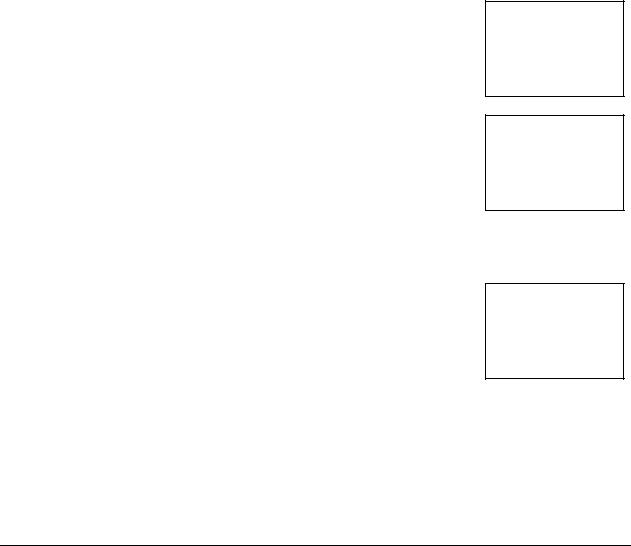
Patterns and Relations |
Activity 4: Stadium Walls |
19 |
20.Change the graph style of Y2.
& # to Y2 ! so the cursor is blinking on top of the little diagonal line on the far left
b
Notice that the diagonal line has changed to a darker line.
21.To see the second line graph over the first, press
*.
Ask: What is true about the graph of the second equation compared to the first? (same line)
22.Explain that another way to determine that the two equations are graphing the same line is from the graph screen.
23.Access the graph screen and turn on Trace.
* )
Notice that Y1=3X+1 is the equation at the top of the screen.
24.Press $.
Notice that now Y2=4+3(X-1) is the equation at the top of the screen.
Press $ again a few times.
Point out to students that as they move from graph to graph, the Y values stay the same, proving that the equations graph the same line.
25.Look at the table of values for this equation.
- i
Ask: What do you notice about the values in Y2?
26.Repeat the procedure for the third equation by entering it in Y3 and viewing the table of values.
© 1998 TEXAS INSTRUMENTS INCORPORATED

20 |
Using the TI-73: A Guide for Teachers |
Patterns and Relations |
Wrap-up
♦Ask: Based on your observation of the graphs of the equations, what conclusions would you draw about the equations you graphed? Have students report findings. This could lead to a discussion of equivalent expressions and simplifying expressions.
♦Have students substitute X = 57 in the equations to find a value for Y. This will also show the equivalency of the equations.
Assessment Suggestions
Have students repeat the above activity for the following situation.
The architect designs the roof trusses with another design. It is made from equal lengths of steel beams arranged in the form of equilateral triangles, as in the diagram below.
1 length
2 lengths
3 lengths
Note that one more length is always in the bottom of the trusses than on the top.
© 1998 TEXAS INSTRUMENTS INCORPORATED

Patterns and Relations |
Activity 4: Stadium Walls |
21 |
Extensions
♦Assign the following problem and have students answer the questions.
A group of students from a jazz choir want to attend an international competition. They need to raise money to help pay for the expenses. Each student decided to investigate a scheme and present their findings at the next meeting of the group.
One student decided to sell granola bars. The predicted profit for every bar sold is $0.65. How much could this scheme realistically make for the trip?
♦Have students present their solutions orally with handouts that include a written plan along with tables and graphs to support their cases.
© 1998 TEXAS INSTRUMENTS INCORPORATED
